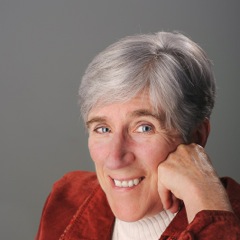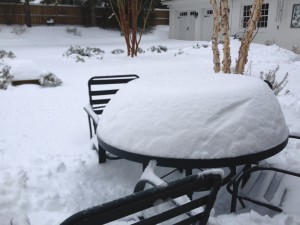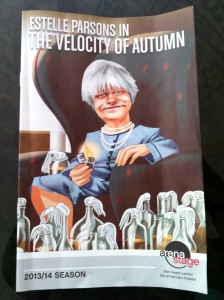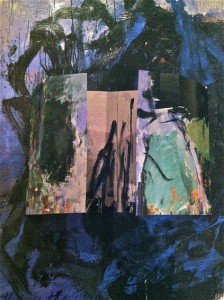Please welcome my friend, Mary Gottschalk, memoirist and novelist, as my guest today. I’ve been following her for a while now, and enjoyed reading her recently published novel, A Fitting Place. When I discovered that Mary would be teaching a class in ” The Bio-ethics for the Aging,” this fall, I asked her to write a post for me, concerning the issues we are faced with today.
It’s of interest to me because having cared for my mother during the last years of her life, I’ve had many questions about health care and the ethics of death and dying, as they present themselves today in our society.
If you have been following the story of terminally ill, Brittany Maynard, the young woman who moved from California to Oregon, so that she could choose the quality of life and death with dignity, that she wanted for herself, you most likely also have questions and thoughts on how we care for our terminally ill loved ones whether they are young or aged and unable to be present in their lives. Saturday evening, Brittany chose to die peacefully, surrounded by friends and family, with the aid of prescription drugs prescribed by a doctor. Her story is an important part of what lies ahead for all of us.
Thanks so much Mary, for taking this on!
Here is what Mary has to offer as we contemplate how to care for our aging population and what we all would like for ourselves when our times come:
Modern Medicine – A Cure Or A Curse
By Mary Gottschalk
Two weeks ago, a woman whom I’ve greatly admired for years, stopped taking her heart medication. A few days later, at home and surrounded by a loving and supportive family, she had what was, by all accounts, a beautiful and dignified passing.
My friend had the best of both worlds. On the one hand, she had access to medicines that kept a damaged heart functioning smoothly for years, allowing her to enjoy her family, her music and her politics well into her 80’s. On the other, as her overall health declined, she understood that forcing her heart to keep pumping was prolonging the process of dying rather than keeping her “alive.”
Her body told her it was time to die. Her decision to stop taking medication meant that she would let her body decide rather than her doctor.
As recently as 200 years ago, if you stopped breathing, you were considered to have died, whatever the cause. There were few scientifically based options to prevent or delay death.
A watershed moment in the history of medicine came with the invention of the stethoscope in 1816 and the ability to register a heartbeat. But there were still no science-based treatment protocols. For the next century, death continued to be, as it had been for much of the history of mankind, a part of “God’s plan” or—if you were of the atheistic or pagan persuasion—a matter of fate.
Until 1928, that is, when Alexander Fleming discovered penicillin. Suddenly, man no longer had to rely on God or fate to determine the outcome of an injury or an infection. Over the last 90 years, our ability to triumph over illness has expanded exponentially. Today, we can prevent most infectious diseases (Ebola being a notable exception), repair a faulty heart, excise a malignant tumor, or replace a failing kidney.
For much of the 20th century, these medical advances focused on preventing “premature” death from infection, disease or trauma. But these often seemingly miraculous discoveries had a number of unintended consequences. For one, the medical advances that keep young and middle aged Americans healthy have played a major role in the explosion of health care costs for the elderly. By preventing or curing acute illness, we have expanded the population vulnerable to chronic illnesses such as diabetes or COPD, many of which cannot be cured at all and are treated at great cost.
Another unintended consequence is that the wonders of modern medicine are increasingly used to “manage” or delay conditions that were once considered normal signs of aging, e.g., sagging skin, declining fertility or loss of muscle tone. But should we think of this as health care? Where is the boundary between preserving a healthy but age appropriate body and defying the natural process of aging? When does the effort to retard aging morph into an outright denial of the inevitability of death?
This urge to deny the inevitable is reflected in the frequency with which high cost and often-intrusive medical interventions are employed to keep an aged body alive long after the will to live has gone and all-too-often in violation of the patient’s expressed wishes to be allowed to die.
As many people interpret the Hippocratic Oath (show the “utmost respect for human life”), doctors and hospitals have an ethical obligation to treat your illness if they have the tools to do so. This prescription made perfect sense when there was little the medical profession could do to actually heal an illness or injury, when their role was largely to keep the patient comfortable until God or the fates stepped in.
But what does “utmost respect” mean when science and technology allow the doctor to second-guess God or the fates … to decide, for example, that a failing heart should be “fixed” by implanting a pacemaker? Should a pacemaker be implanted in an otherwise healthy 35-year-old father of four? Most of us would instinctively say yes. Should one be implanted in an 85-year-old stroke victim whose mental capacity is permanently impaired? The answer is not so obvious.
These are not new questions, but they take on a new urgency as the baby boomers age. There are not enough resources—money, caregivers, or care facilities—to treat all the “ills” of the over 65 crowd today, let alone the estimated 90 million elderly that will be clamoring for medical care by 2050.
How do we, as a society, decide what kind of health care the elderly should receive, and under what circumstances? Should we have a category for “age appropriate” health care? Should we continue to provide virtually unlimited access to health care for to elderly patients who can pay—regardless of their medical need or the potential benefits of the treatment—while ignoring younger patients who cannot pay but might have greater need and greater potential benefit? Do we continue to provide ever more costly—and in some situations, unlimited—health care to terminally ill baby boomers if it means that children and young adults will not get the care they need?
And who should decide about your life at the end of your life. Should your decision be based on spiritual / religious precepts that are often ambiguous or on a rational cost-benefit analysis? Should it be based on your capacity to still enjoy your grandchildren? Should it be based on the emotional cost to yourself and your family if the cure (e.g., chemotherapy) is worse than the disease? Should you accept your doctor’s recommendation or let your body decide?
Under the laws of the U.S., you have the right to determine who will make that end-of-life decision and under what conditions. My friend was lucky … she was able to communicate her wishes to her family in a way that they were willing to support her. Many of us will not be so lucky. If you do not make your wishes known well in advance—to your family, your lawyer and your doctor—you may not have any choice at all when the time comes.
About Mary Gottschalk
Mary has made a career out of changing careers.
She spent nearly thirty years in the financial markets, working with and for Fortune 500 companies in the United States, New Zealand, Australia, Europe and Mexico.
In the mid-1980’s, at age 40, Mary dropped out of the corporate world to embarked on the three-year sailing voyage that is the subject of her memoir, SAILING DOWN THE MOONBEAM.
In her latest incarnation, she is a full-time writer and occasional teacher, including a seminar on the Bio-Ethics of Aging.
Her first novel, A FITTING PLACE, was released May 1, 2014. She lives in Des Moines, Iowa, where she works as a freelance writer and editor. You can find her website and her blog—The Illusion of Control—here.






